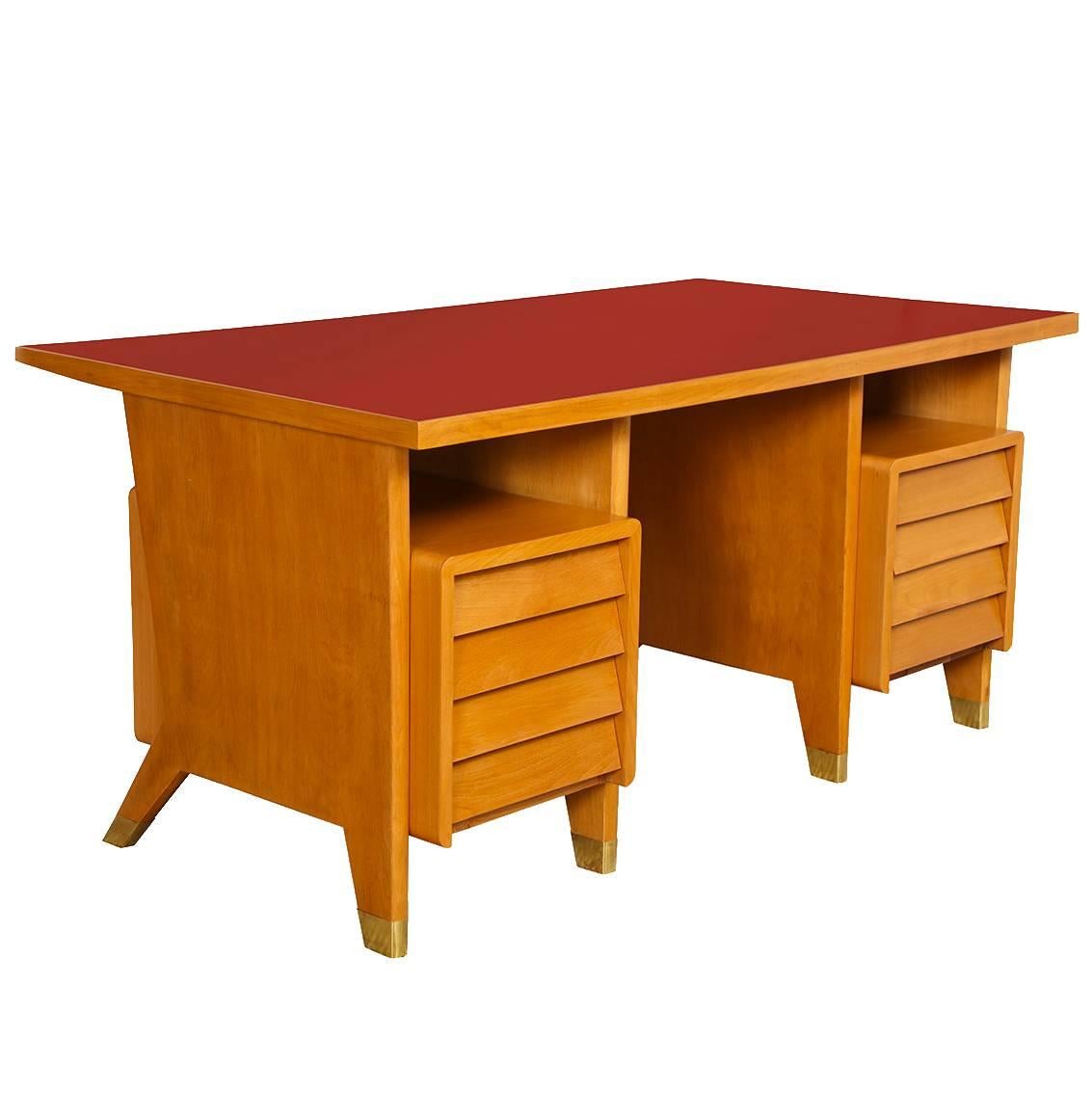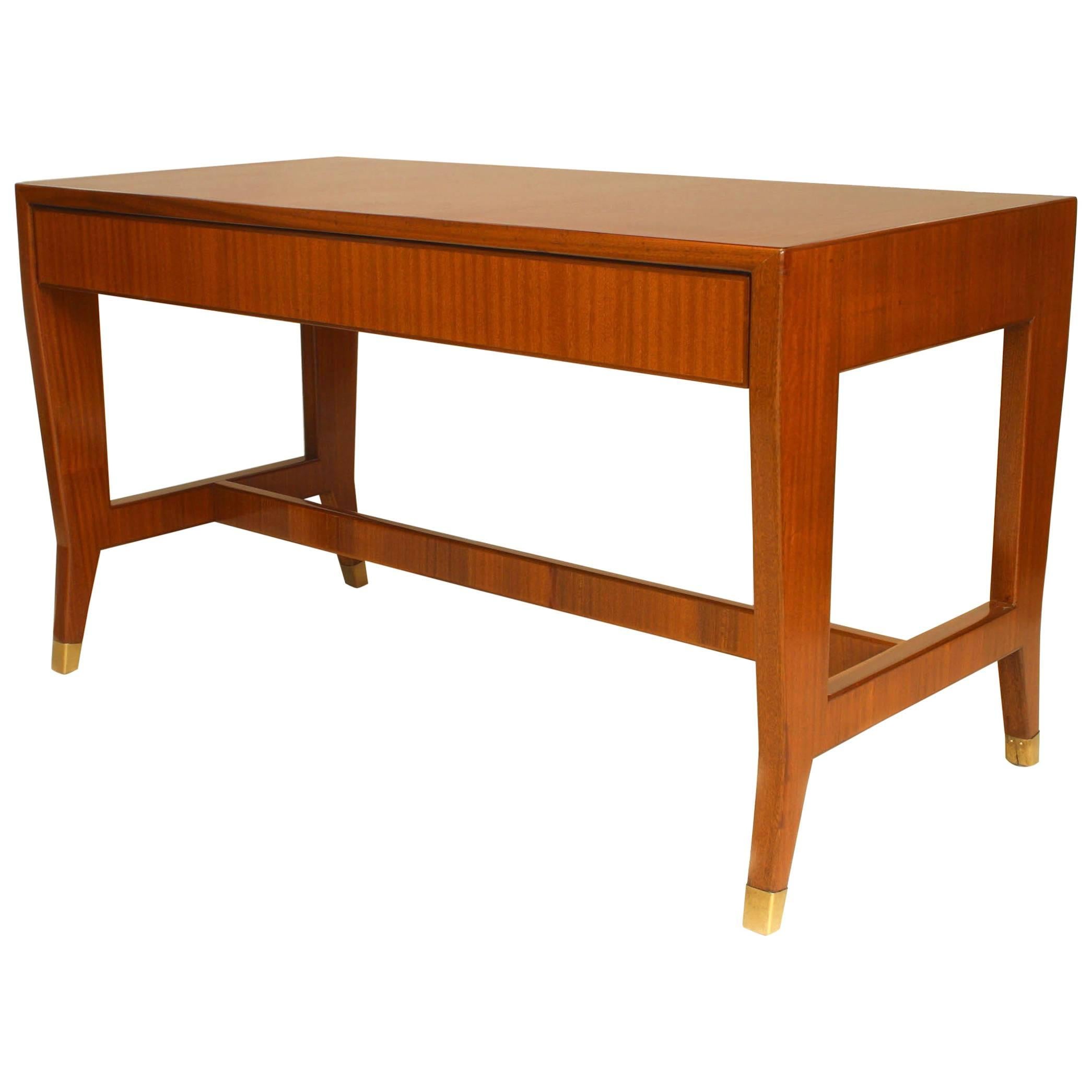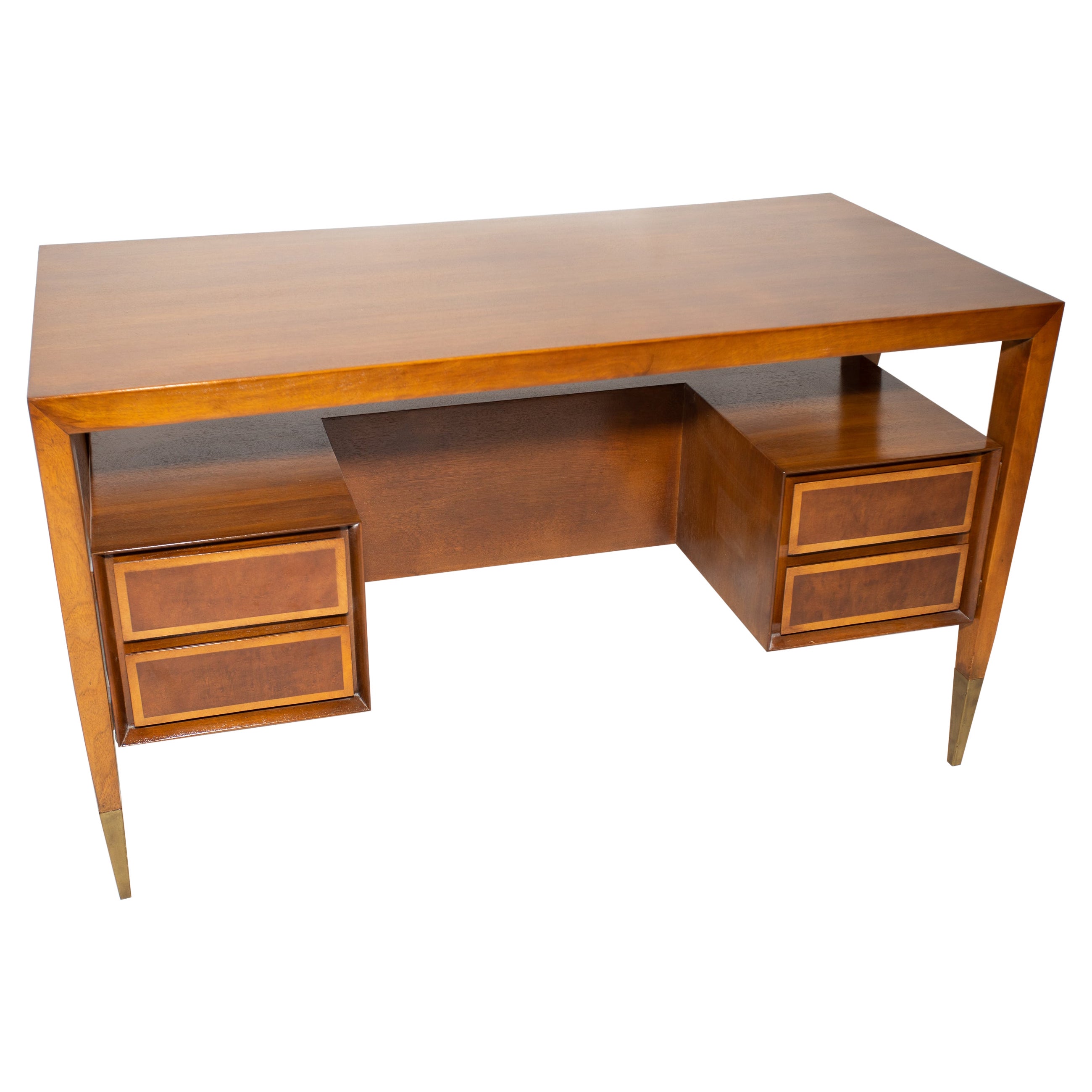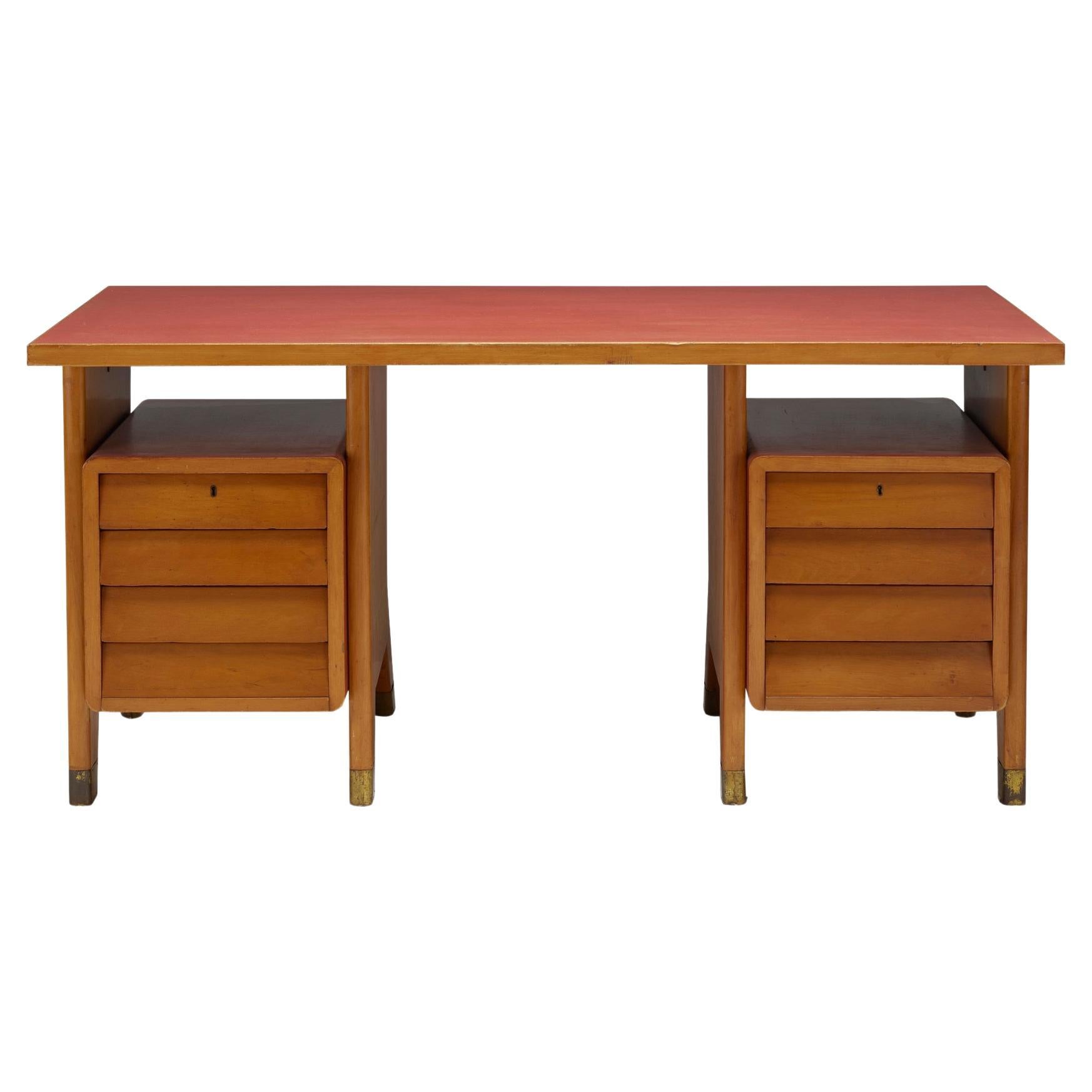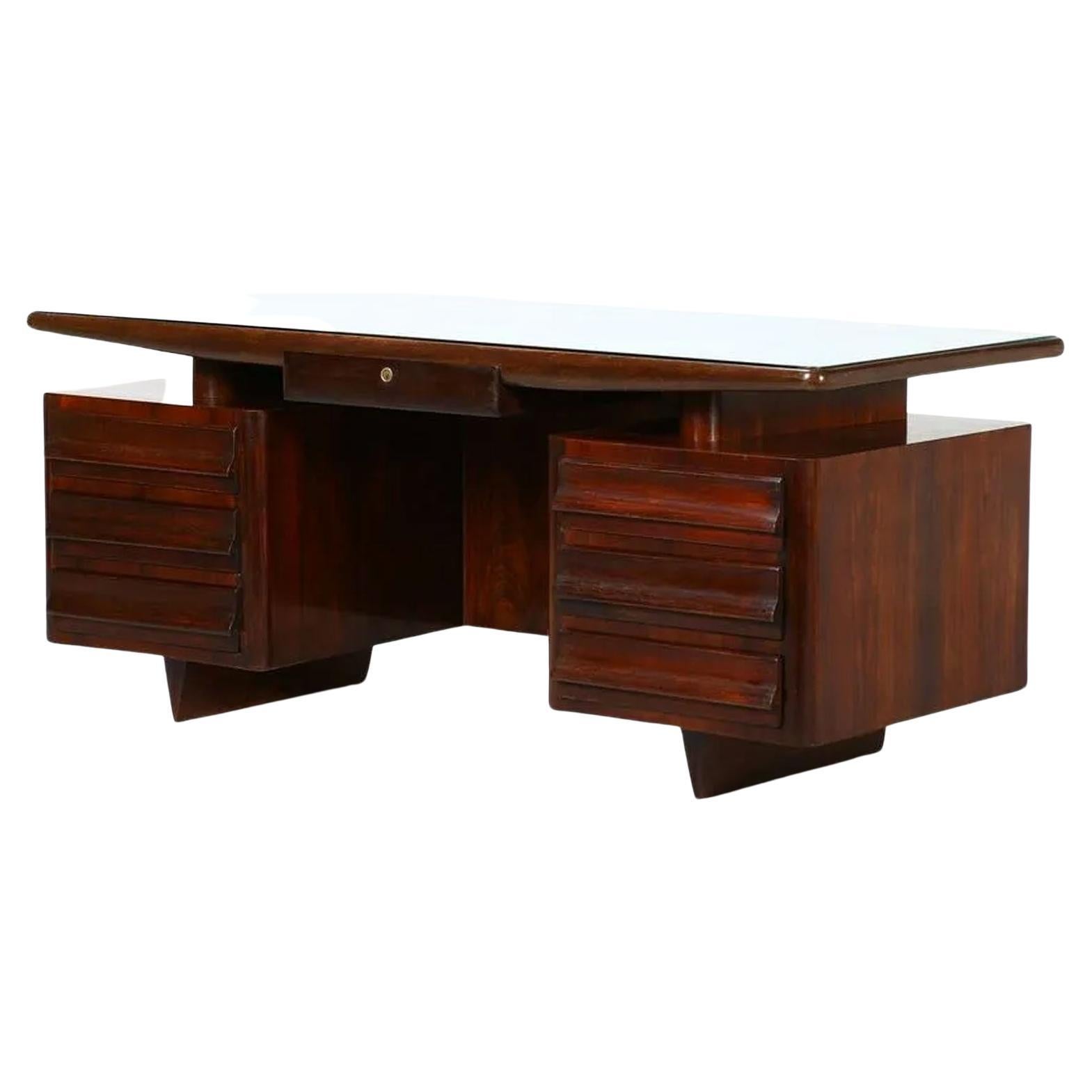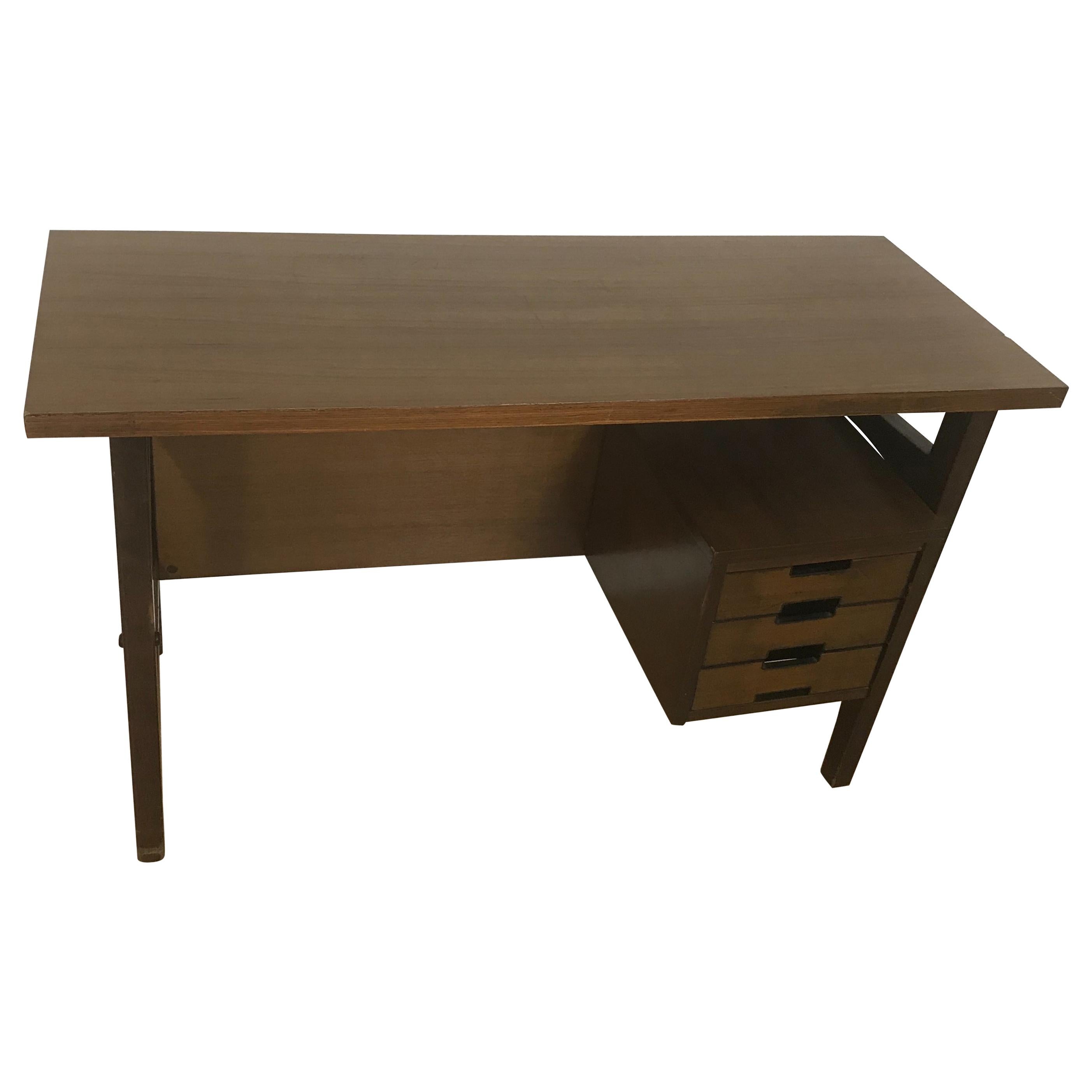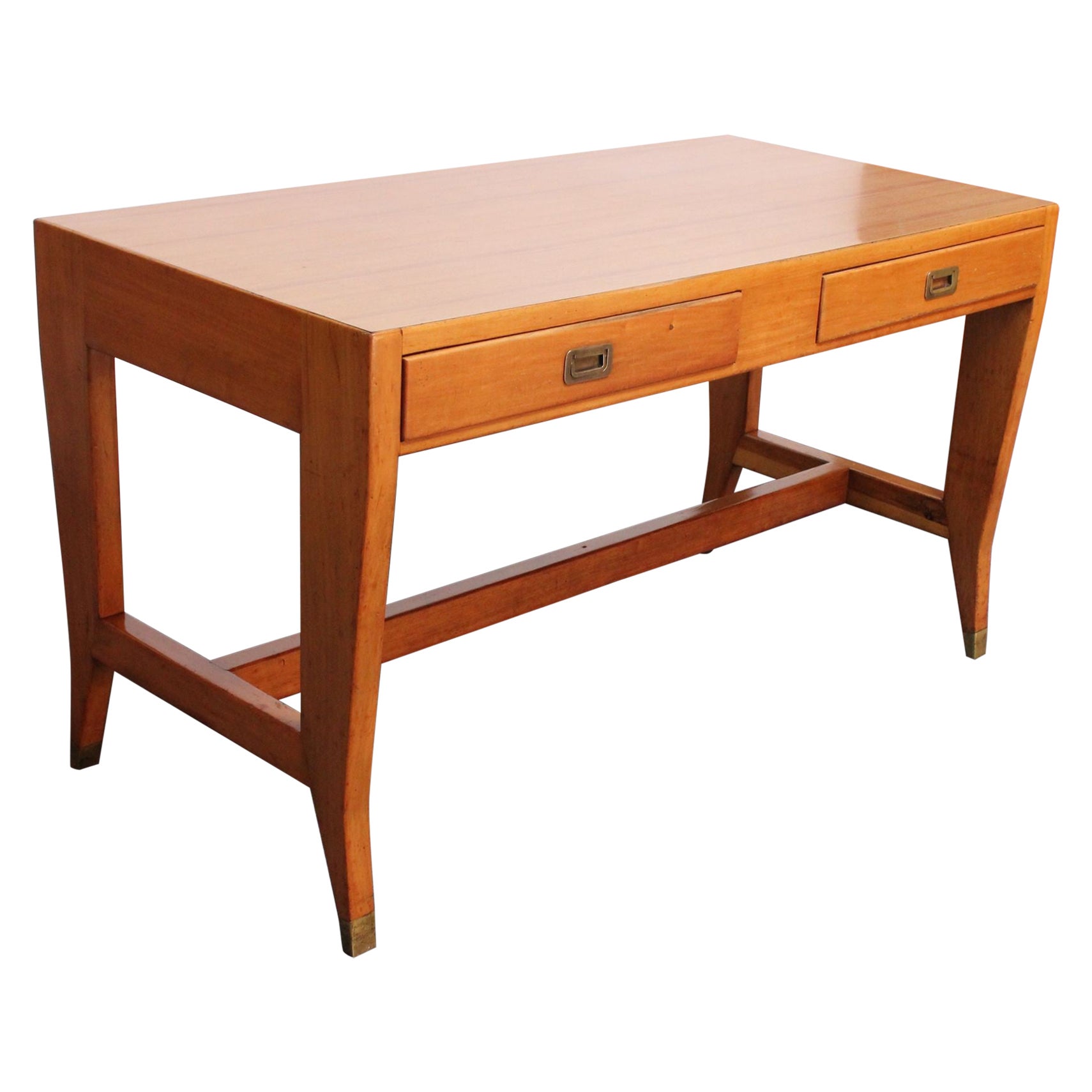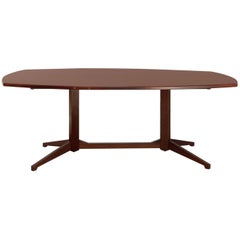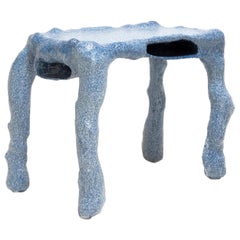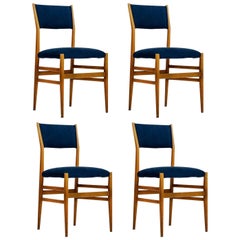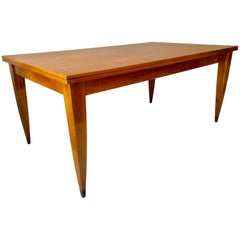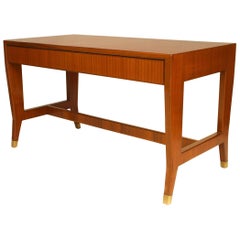
Gio Ponti Table Desk
View Similar Items
Gio Ponti Table Desk
About the Item
- Creator:Gio Ponti (Designer)
- Dimensions:Height: 31.11 in (79 cm)Width: 31.5 in (80 cm)Depth: 63 in (160 cm)
- Style:Mid-Century Modern (Of the Period)
- Materials and Techniques:
- Place of Origin:
- Period:
- Date of Manufacture:1950
- Condition:Minor losses.
- Seller Location:Barcelona, ES
- Reference Number:1stDibs: LU237436123203
Gio Ponti
An architect, furniture and industrial designer and editor, Gio Ponti was arguably the most influential figure in 20th-century Italian modernism.
Ponti (1891–1979) designed thousands of furnishings and products — from cabinets, lamps and chairs to ceramics and coffeemakers — and his buildings, including the brawny Pirelli Tower (1956) in his native Milan, and the castle-like Denver Art Museum (1971), were erected in 14 countries. Through Domus, the magazine he founded in 1928, Ponti brought attention to virtually every significant movement and creator in the spheres of modern art and design.
The questing intelligence Ponti brought to Domus is reflected in his work: as protean as he was prolific, Ponti’s style can’t be pegged to a specific genre. In the 1920s, as artistic director for the Tuscan porcelain maker Richard Ginori, he fused old and new; his ceramic forms were modern, but decorated with motifs from Roman antiquity. In pre-war Italy, modernist design was encouraged, and after the conflict, Ponti — along with designers such as Carlo Mollino, Franco Albini, Marco Zanuso — found a receptive audience for their novel, idiosyncratic work. Ponti’s typical furniture forms from the period, such as the wedge-shaped Distex chair, are simple, gently angular, and colorful; equally elegant and functional. In the 1960s and ’70s, Ponti’s style evolved again as he explored biomorphic shapes, and embraced the expressive, experimental designs of Ettore Sottsass Jr., Joe Colombo and others.
His signature furniture piece — the one by which he is represented in the collections of the Museum of Modern Art in New York, Germany’s Vitra Design Museum and elsewhere — is the sleek Superleggera chair, produced by Cassina starting in 1957. (The name translates as “superlightweight” — advertisements featured a model lifting it with one finger.) Ponti had a playful side, best shown in a collaboration he began in the late 1940s with the graphic artist Piero Fornasetti. Ponti furnishings were decorated with bright finishes and Fornasetti's whimsical lithographic transfer prints of things such as butterflies, birds or flowers; the Montreal Museum of Fine Arts possesses a 1950 secretary from their Architetturra series, which feature case pieces covered in images of building interiors and facades. The grandest project Ponti and Fornasetti undertook, however, lies on the floor of the Atlantic Ocean: the interiors of the luxury liner Andrea Doria, which sank in 1956.
Widely praised retrospectives at the Queens Museum of Art in 2001 and at the Design Museum London in 2002 sparked a renewed interest in Ponti among modern design aficionados. (Marco Romanelli’s monograph written for the London show, offers a fine overview of Ponti’s work.) Today, a wide array of Ponti’s designs are snapped up by savvy collectors who want to give their homes a touch of Italian panache and effortless chic.
Find a range of Gio Ponti furniture on 1stDibs.
- Franco Albini Mahogany mid-centry Italian Table Model TL-22 produced by PoggiBy Franco AlbiniLocated in Barcelona, ESFranco Albini & Franca Helg. Dining table model no. TL22. Manufactured by Poggi, Italy, 1958. Mahogany. Measurements: 180.3 cm x 104.1 cm x 73 H cm. 70.98 in x 40.98 in x 28.74 in. Literature: Giuliana Gramigna, Repertorio 1950/1980, Milan, 1985, p. 123. Franco Albini, was born in 1905 and died in 1977. He spent his childhood and part of his youth in Robbiate in Brianza, where he was born. Albini, as an adolescent moved with his family to Milan. Here he enrolled in the Faculty of Architecture of the Polytechnic and graduated in 1929. He started his professional activity in the studio of Gio Ponti and Emilio Lancia, with whom he collaborated for three years. At the 1929 International Exhibition in Barcelona (where Gio Ponti curated the Italian pavilion and Mies van der Rohe realized that of Germany) and in Paris where, as Franca Helg recounted, he had the opportunity to visit the studio by Le Corbusier. In those three years, the works he carried out are admittedly of the twentieth century imprint. It is the meeting with Edoardo Persico that marked a clear turning point towards rationalism and the approach to the group of editors of "Casabella". The partly ironic and partly very harsh comments of the Neapolitan critic to a series of drawings, made by Albini for the design of some office furniture, caused him a great disturbance. “I spent days of real anguish - Albini recalls - I had to answer all the questions. I also had a fever, a large and long fever. " The meted provoked Albini to openen a professional studio in via Panizza with Renato Camus and Giancarlo Palanti. The group of architects began to deal with public housing by participating in the competition for the Baracca district in San Siro in 1932 and then building the IFACP neighborhoods: Fabio Filzi (1936/38), Gabriele D'Annunzio and Ettore Ponti (1939). During this period, Albini also worked on his first villa (Pestarini), which Giuseppe Pagano, architect and critic of the time, presented as follows: “This coherence, which the superficial rhetoric of fashionable jugglers calls intransigence, and which is instead the basis of understood between the fantasy of art and the reality of the craft, in Franco Albini, it is so rooted that it transforms theory into a moral attitude ". But it is above all in the context of the exhibitions that the Milanese master experienced his compromise between that "rigor and poetic fantasy" of which Pagano speaks, coining the elements that became a recurring theme in his . The opening in 1933 of the new Triennale headquarters in Milan, in the Palazzo dell'Arte, was an important opportunity to express the strong innovative character of rationalist thinking, a gym in which to freely experiment with new materials and new solutions, but above all a "method". "Cultivated as a communication laboratory, the art of setting up was for the rationalists of the first generation what the perspective had been for the architects of humanism: the field open to a hypothesis of space that needed profound reflections before landing the concreteness of the construction site ". Together with Giancarlo Palanti, Albini on the occasion of the V Triennale di Milano set up the steel structure house (with R. Camus, G. Mazzoleni, G. Minoletti and with the coordination of G. Pagano), for which he also designed the 'furniture. At the following Triennale of 1936, Persico dided, together with a group of young designers gathered by Pagano in the previous edition of 1933, Franco Albini took care of the preparations of the home exhibition. The setting up of Stanza per un uomo, at that same Triennale, allows us to understand the acute and ironic approach of Albini, as a man and as a designer: "Celebrating the beauty of mechanics was the imperative to which, for example, the surprising displays by Franco Albini who managed, in the subtle way of a refined and rarefied style, to sublimate their practical content in the metaphysics of daring still lifes: flying objects which marked in the void refined frames and metal intricacies the nodes of a fantastic cartography where industry finally became art free from purpose ". That same year Albini and Romano designed the exhibition of the Ancient Italian Goldsmithery: vertical uprights, simple linear rods, designed the space. A theme, of the "flagpole", seemed to be the center of the evolution of production and the creative process. The concept is reworked over time, with the technique of decomposition and recomposition typical of Albinian design: in the preparation of the Scipione Exhibition and contemporary drawings (1941) the tapered flagpoles, on which the paintings and display cases were hung, are supported by a grid of steel cables; in the Vanzetti stand (1942) they take the V-shape; in the Olivetti shop in Paris (1956) the polished mahogany uprights support the shelves for the display of typewriters and calculators. The flagpole is found, however, also in other areas. In the apartments he designed, it is used as a pivot on which the paintings can be suspended and rotated to allow different points of view, but at the same time as an element capable of dividing the spaces. The Veliero bookcase...Category
Mid-20th Century Italian Mid-Century Modern Dining Room Tables
MaterialsMahogany
- Lukas Saint-Joigny, Contemporary Desk/Table, Blue, Polyurethane, Paris, 2020By Lukas Saint-JoigyLocated in Barcelona, ESLukas Saint-Joigny Desk From the “Ore” series Manufactured by Lukas Saint-Joigny Produced in exclusive for SIDE GALLERY Paris, 2020 Various materials and polyurethane Measur...Category
21st Century and Contemporary French Desks and Writing Tables
MaterialsResin
- Gio Ponti Set of four Mid-century Blue Italian Dining Chairs Model "Leggera"By Gio Ponti, CassinaLocated in Barcelona, ESGio Ponti (1891-1979) Set of four dining chairs, model "leggera" Manufactured by Cassina Italy, 1951 Measurements 82.55 cm x 44.45cm x 45.72 cm. 32.55 in x 17.5 in x 18 in. Litera...Category
Mid-20th Century Italian Mid-Century Modern Chairs
MaterialsUpholstery, Wood
- Muller Van Severen, Writing Desk, Belgium, 2015By Muller Van SeverenLocated in Barcelona, ESBookshelf model “Writing Desk” Manufactured by Muller Van Severen Belgium, 2015 Unlacquered steel frame and polyethylene shelves Open edition Measurements: 150 cm x 100cm x 1...Category
2010s Belgian Desks and Writing Tables
MaterialsSteel
$5,240 / item - Muller Van Severen, 3 Pieces Desk, Belgium, 2014By Muller Van SeverenLocated in Barcelona, ESTable model “3 Pieces Desk” Manufactured by Muller Van Severen Produced for Side Gallery Rusted steel frame and high gloss lacquered steel plates Measurements 120 cm x 70 cm x...Category
2010s Belgian Desks and Writing Tables
MaterialsSteel
$7,812 / item - Gio Ponti Pair of Armchairs, Model "803" Manufactured by Cassina Italy, 1955By Gio PontiLocated in Barcelona, ESGio Ponti Pair of armchairs, model «803» Manufactured by Cassina Italy, 1955 Walnut, fabric. From the archives of Side Gallery, Barcelona Measurements 80 cm x 75 cm x 81.5 H...Category
Vintage 1950s Italian Armchairs
MaterialsFabric, Walnut
- Gio Ponti Style Modern Italian Library or Dining TableBy Gio PontiLocated in Brooklyn, NYSharply tailored mahogany writing or dining table with single side drawer and sculpted legs ending in brass sabots. Measure: Drawer is 20.5" deep and 19.25" wide.Category
Vintage 1940s Italian Mid-Century Modern Dining Room Tables
MaterialsMahogany
- Gio Ponti DeskBy Gio PontiLocated in New York, NYGio Ponti custom eight-drawer desk. From a small edition created for administrative offices in Forli, Italy. Blonde wood desk with red linoleum top,...Category
Vintage 1950s Italian Mid-Century Modern Desks and Writing Tables
MaterialsWood
$26,000 - Italian Gio Ponti Mahogany Table DeskBy Gio PontiLocated in New York, NYItalian 1930s mahogany table desk with geometric form legs with brass sabot feet and a single drawer with a stretcher (GIO PONTI - for the University of Padua)Category
Early 20th Century Italian Mid-Century Modern Desks and Writing Tables
MaterialsBrass
- Rare Gio Ponti DeskBy Gio PontiLocated in West Palm Beach, FLA Gio Ponti desk manufactured in Italy by Giordano Chiesa. An early example with 2 tone drawer fronts. Purchased at the Singer Showroom in NYC. Purchased from the original family ...Category
Vintage 1950s Italian Desks and Writing Tables
MaterialsWalnut
$29,500 - Rare Gio Ponti Administrative DeskBy Gio PontiLocated in Los Angeles, CAGio Ponti desk designed in limited edition for city offices of Forlì, Italy. Original red Formica writing surface on European beechwood with 8 floating drawers. Brass base on legs. ...Category
Vintage 1940s Italian Mid-Century Modern Desks and Writing Tables
MaterialsFormica, Beech
- Gio Ponti Original 1950's DeskBy Gio PontiLocated in London, GBAn architect, furniture and industrial designer and editor, Giò Ponti was arguably the most influential figure in 20th-century Italian Modernism. Ponti designed thousands of furnishi...Category
Vintage 1950s Italian Mid-Century Modern Desks and Writing Tables
MaterialsBrass
Recently Viewed
View AllRead More
Barnaba Fornasetti’s Hallucinatory House Has His Father’s Spirit
Behind a nondescript facade in northeastern Milan is the magical residence of Barnaba Fornasetti. It's a shrine to the style developed by his design-legend father, which still defies categorization.
Billy Cotton Layers His Interiors with Lived-In Comfort
The Brooklyn-based designer is adept at styles ranging from austere to over-the-top, espousing an architectural, detail-oriented approach also evident in his line of furniture and lighting.

